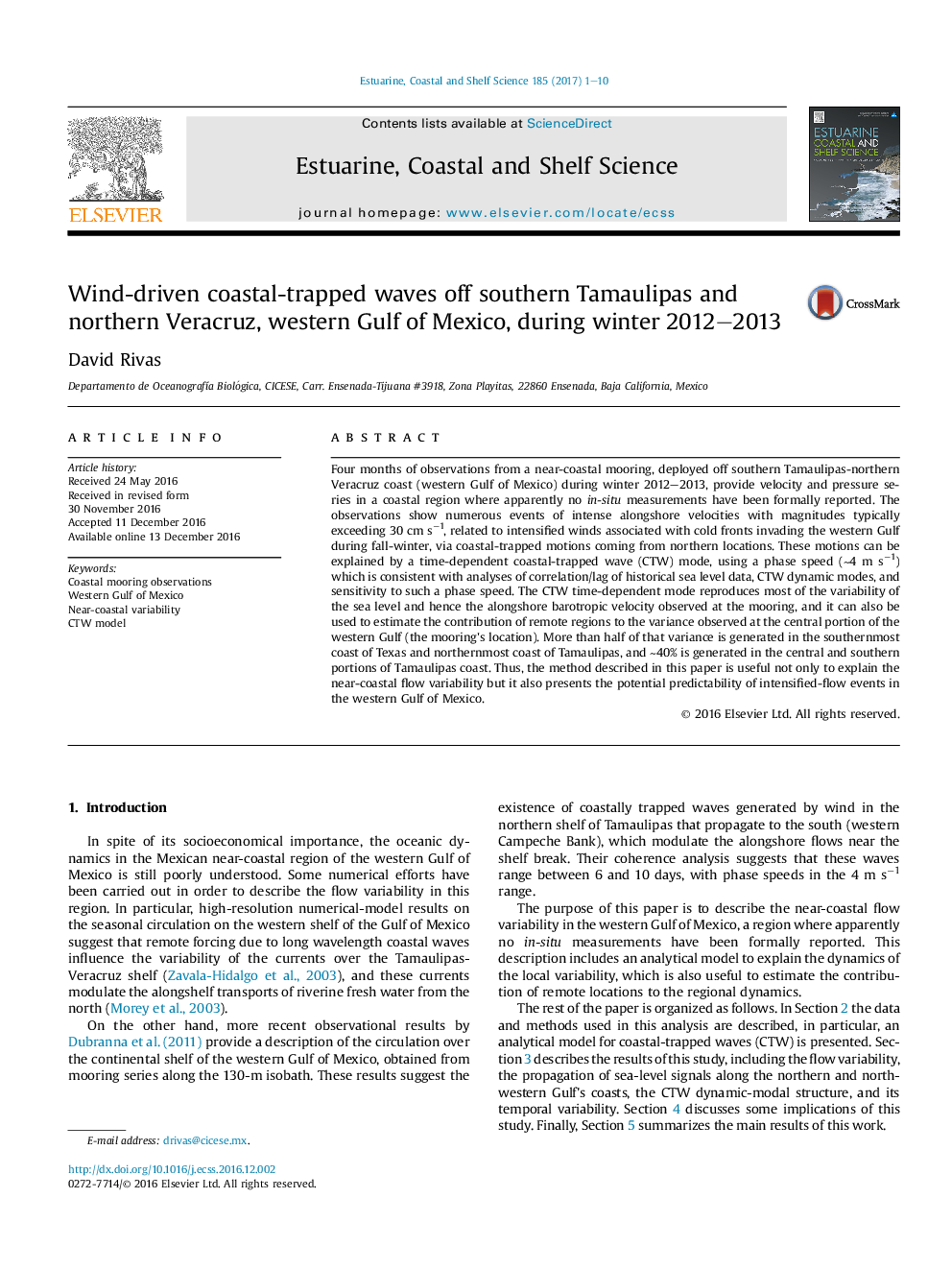| Article ID | Journal | Published Year | Pages | File Type |
|---|---|---|---|---|
| 5765274 | Estuarine, Coastal and Shelf Science | 2017 | 10 Pages |
Abstract
Four months of observations from a near-coastal mooring, deployed off southern Tamaulipas-northern Veracruz coast (western Gulf of Mexico) during winter 2012-2013, provide velocity and pressure series in a coastal region where apparently no in-situ measurements have been formally reported. The observations show numerous events of intense alongshore velocities with magnitudes typically exceeding 30 cm sâ1, related to intensified winds associated with cold fronts invading the western Gulf during fall-winter, via coastal-trapped motions coming from northern locations. These motions can be explained by a time-dependent coastal-trapped wave (CTW) mode, using a phase speed (â¼4 m sâ1) which is consistent with analyses of correlation/lag of historical sea level data, CTW dynamic modes, and sensitivity to such a phase speed. The CTW time-dependent mode reproduces most of the variability of the sea level and hence the alongshore barotropic velocity observed at the mooring, and it can also be used to estimate the contribution of remote regions to the variance observed at the central portion of the western Gulf (the mooring's location). More than half of that variance is generated in the southernmost coast of Texas and northernmost coast of Tamaulipas, and â¼40% is generated in the central and southern portions of Tamaulipas coast. Thus, the method described in this paper is useful not only to explain the near-coastal flow variability but it also presents the potential predictability of intensified-flow events in the western Gulf of Mexico.
Related Topics
Physical Sciences and Engineering
Earth and Planetary Sciences
Geology
Authors
David Rivas,
